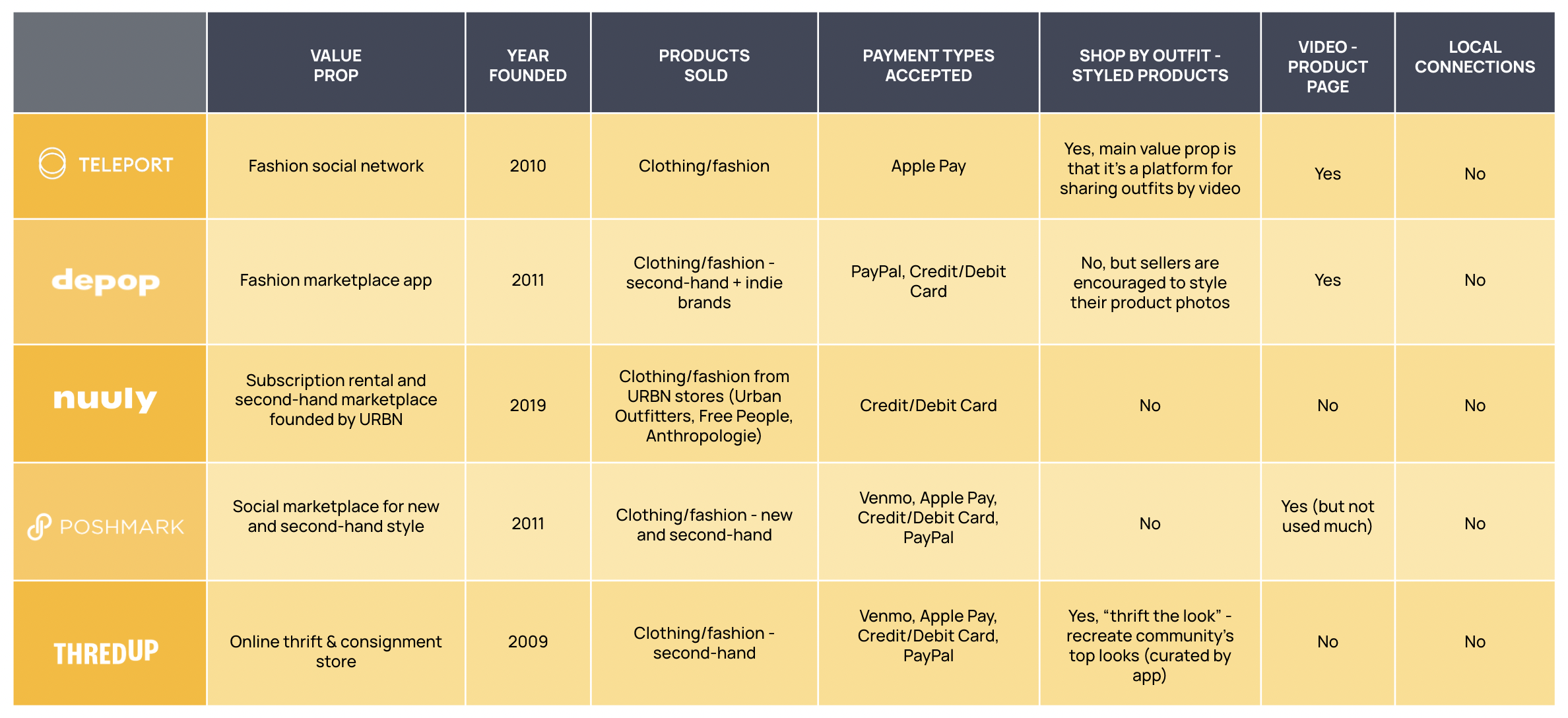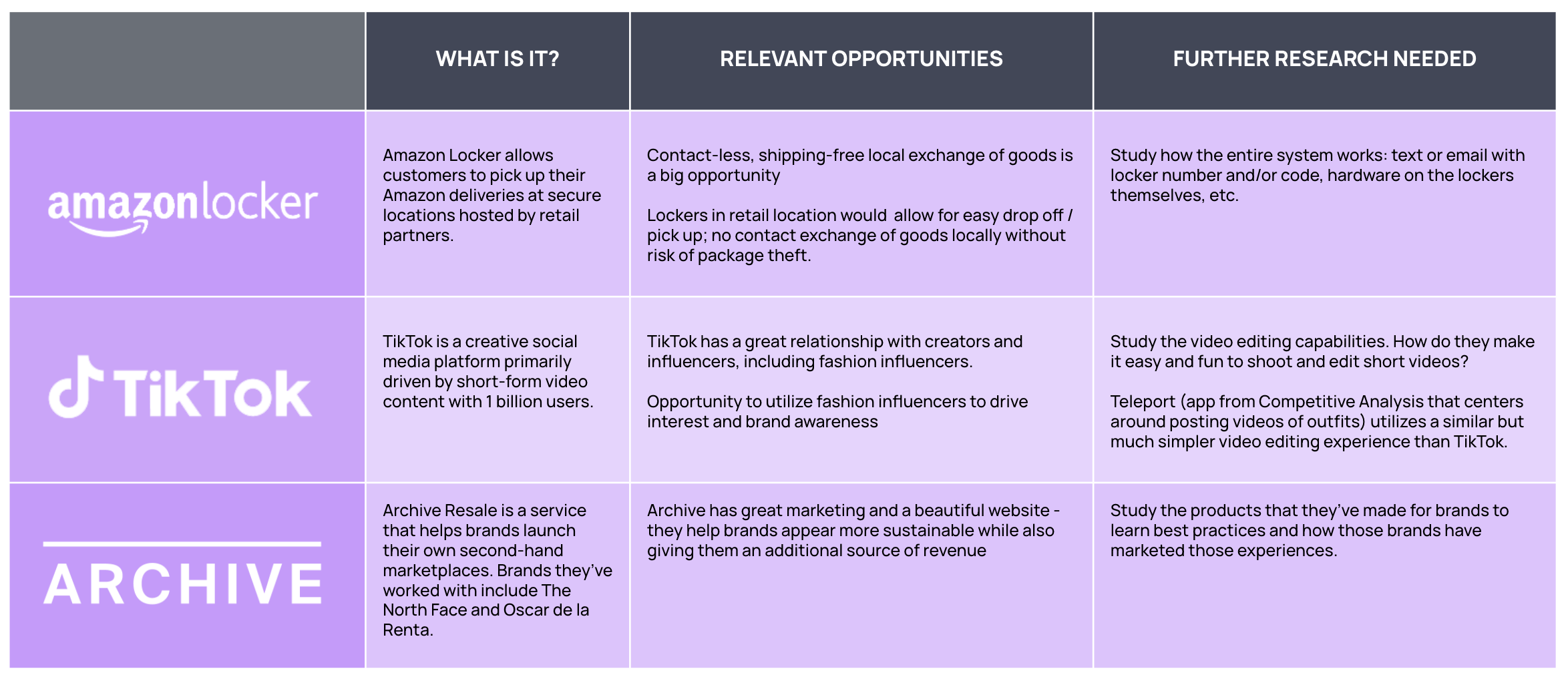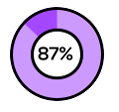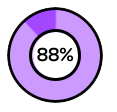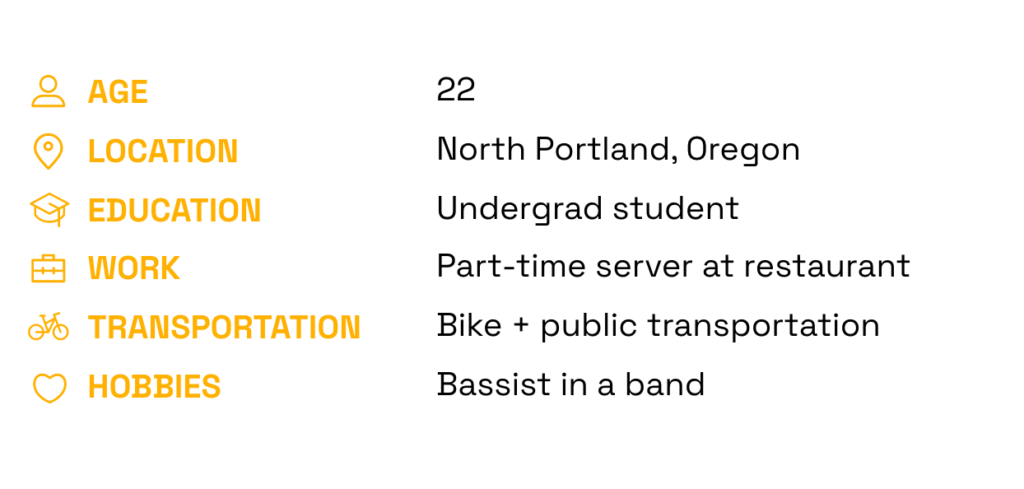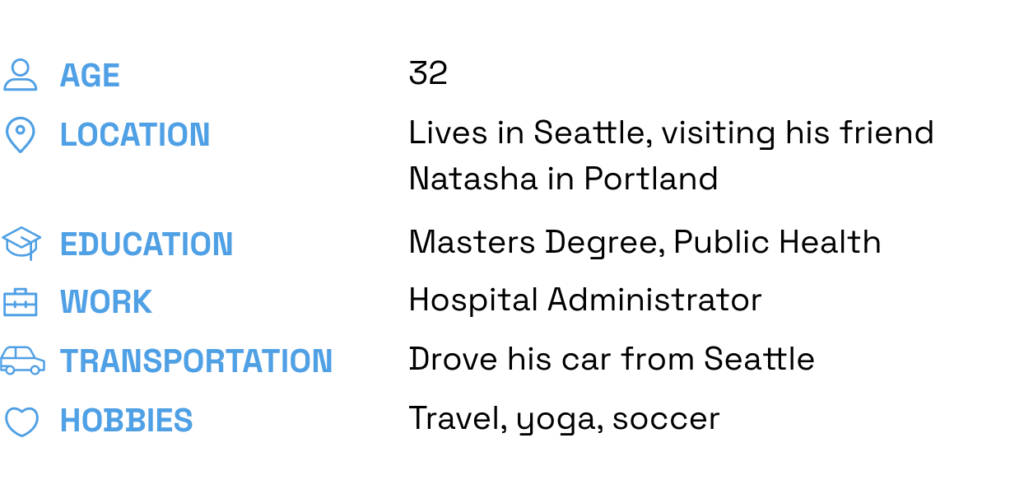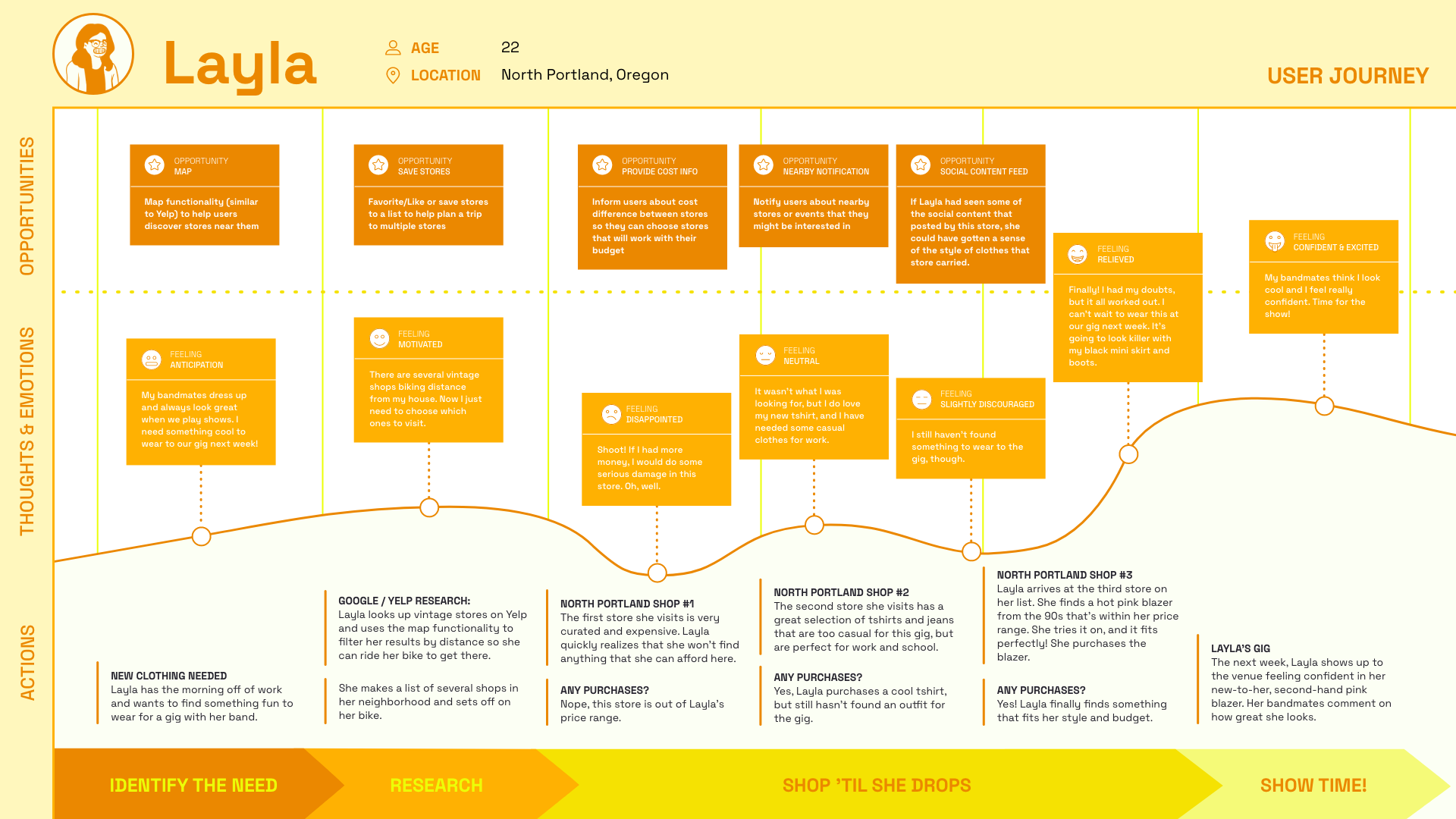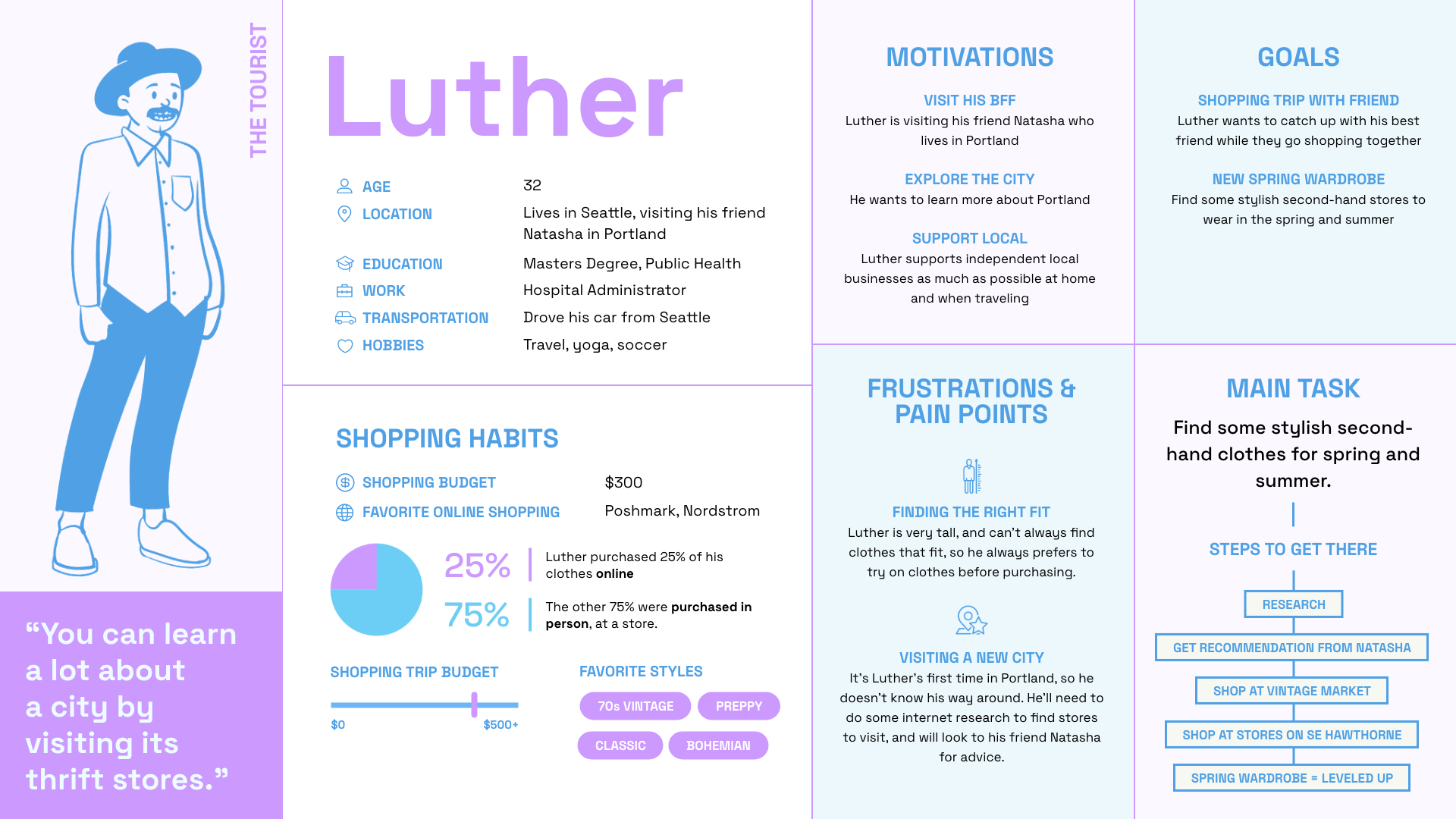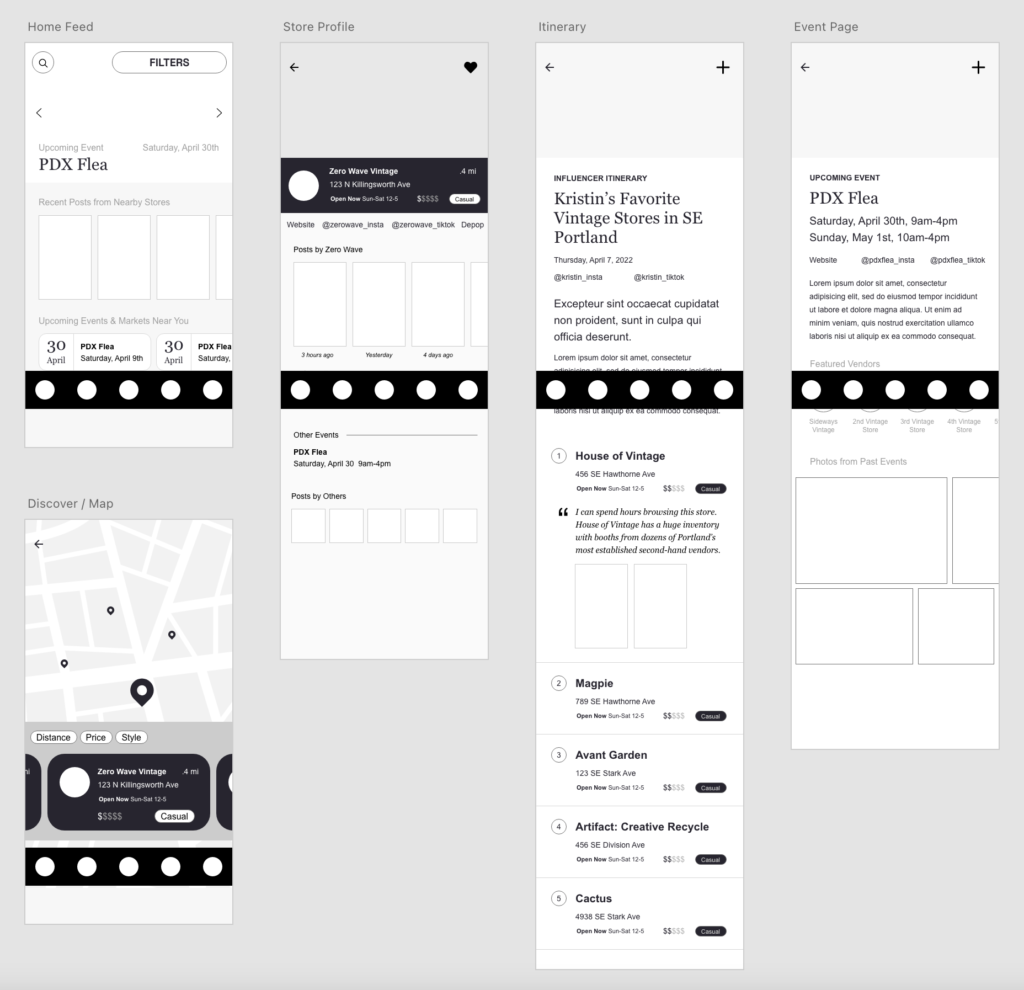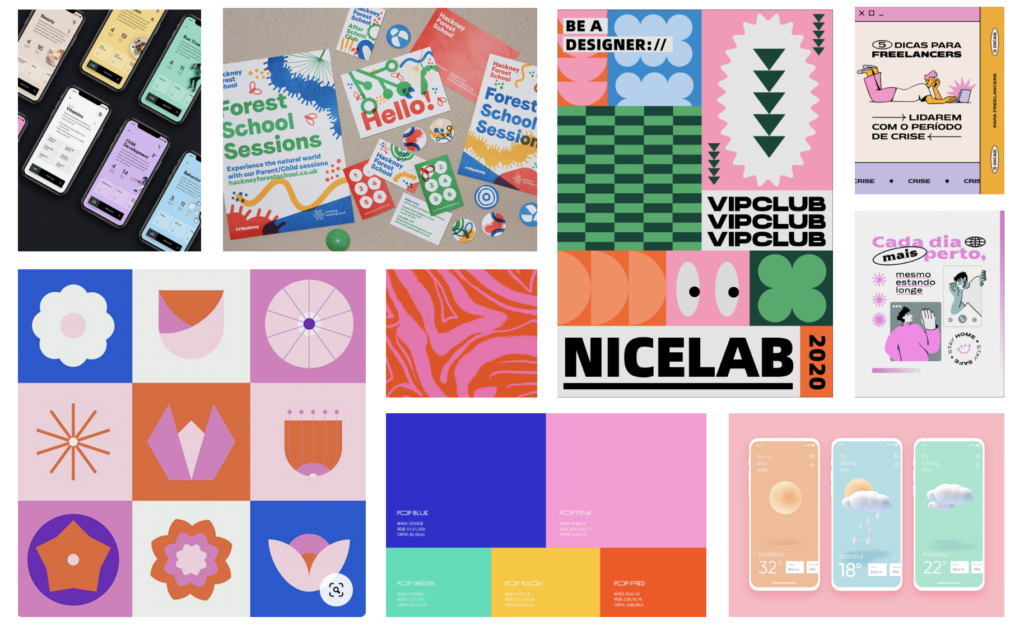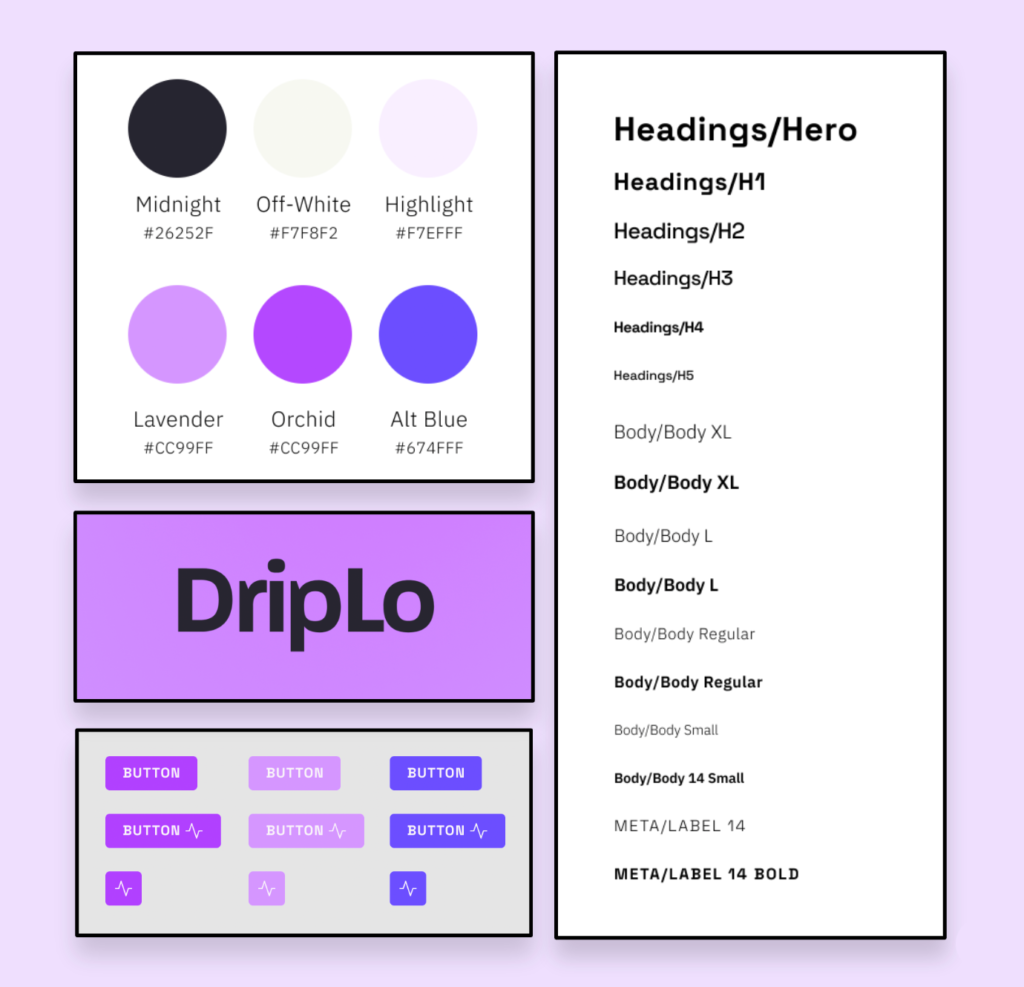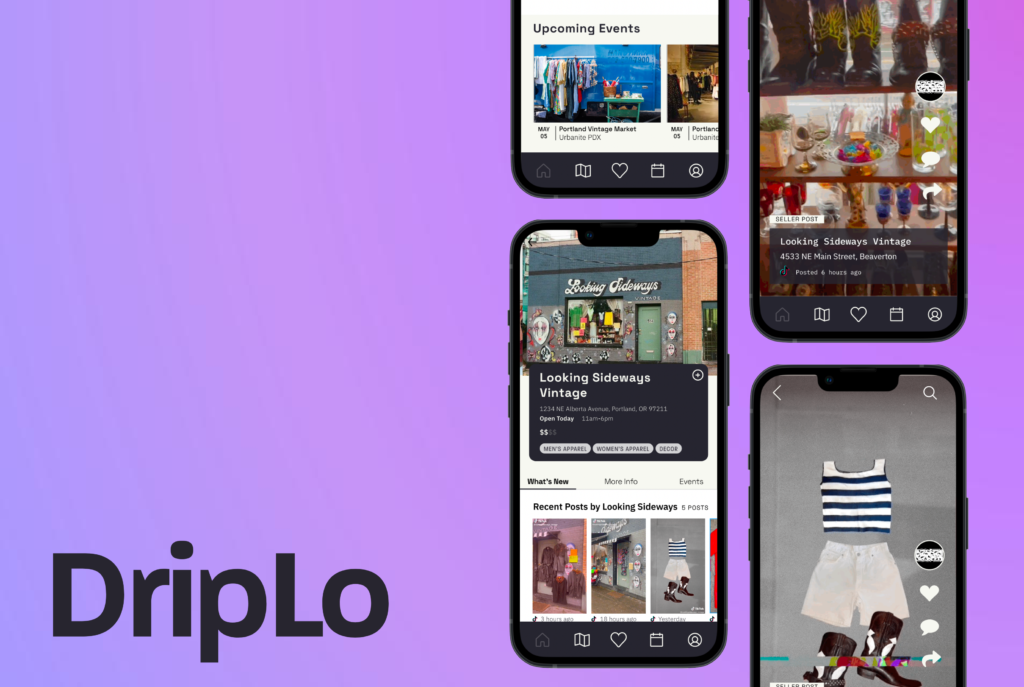
Macro Force Assessment
By looking at external forces that are at play in the second-hand fashion space, I was able to identify opportunities for innovation.
Of the 6 macro forces, I found that 5 of them play a role or present opportunities in the second-hand fashion space (all except Political). Early on in this project, this served as confirmation that this was a valid topic to explore, with plenty of room for innovation and iteration.
Gen Z & Millennials are more financially conscious than older generations, and more likely to buy second-hand
Increased awareness of climate change provides an opportunity to encourage more sustainable shopping habits to the conscious consumer
Nostalgic fashion trends (such as #y2k) drive interest in second-hand sales, but can also lead to inflated prices.
Opportunity to reach socially conscious shoppers that care less about trends and more about their own individualistic style
Opportunity to integrate with tools that users and stakeholders (second-hand sellers / stores) are already using, like social media


